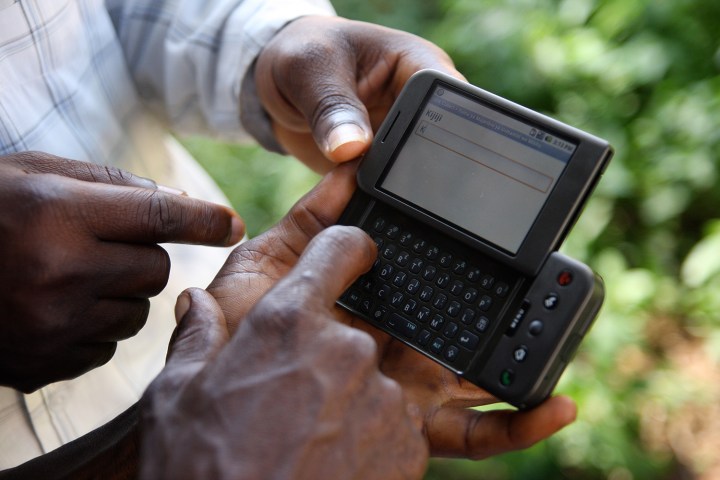
It’s strange to think that only 10 years ago, the concept of an Android phone was still brand new. At the time, the mobile industry was dominated by three main operating systems. The largest player was Apple, which was selling the iPhone 3GS. Its iPhone OS (the name at the time) ran on 50 percent of mobile devices on the market. Following behind was BlackBerry, with 22 percent of the market and its shiny new Bold 9000 on offer. Windows lagged behind, even then, but was far from dead. Phones like the Sony Ericsson Xperia X1 ran Microsoft’s operating system, giving it 11 percent market share.
Into this environment came a brave new operating system, one that had been in development for several years already and had the heft of Google behind it, thanks to a 2005 acquisition. Not only did Android benefit from the depth of Google’s pockets, but it also benefitted from the tie-in with Google’s most popular services, like Gmail and YouTube. Looking back, it seems obvious that Android would end up becoming the biggest mobile operating system in the world, but in 2008 it wasn’t even clear how much that title would come to mean.

Still, even at that time, Google making its first foray into mobile operating systems was a major event. It came in the form of HTC’s T-Mobile G1, or HTC Dream as it’s known outside the U.S. The G1 was priced at $179 — which was pretty affordable even in those days — and featured top-of-the-line specs including a Qualcomm MSM7201A processor, 192MB of RAM, and 256MB of internal storage (expandable up to 16GB). It also stocked a 3.15MP rear camera, a 1,150mAh battery, and much more — see the full list below.
HTC G1 specs:
- 3.2-inch display with 320 x 480 resolution
- Qualcomm MSM 7201A processor
- Adreno 130 GPU
- 192MB RAM
- 256MB internal storage, expandable up to 16GB
- 1,150mAh battery
- 3.15MP rear camera
- 158 grams
- Around 17mm thick
- Android 1.0 (supported up to Android 1.6 Donut)
- Proprietary ExtUSB port
- No 3.5mm headphone jack
As for design, it was plastic and cheap-looking, a far cry from the sophistication of Apple’s iPhone 3G. It did feature a pretty nifty slider though, which pushed up to reveal a keyboard — a design tactic frequently used at the time. Also typical of mobile phones of that era: It was heavy and thick. Weighing in at 158 grams, it was only 19 grams less than the modern-day iPhone XS, a larger and much more technically complex device. At two-thirds of an inch thick, it was also much thicker than anything on the market today.
One last knock on the design: It didn’t have a 3.5mm headphone jack, instead providing an adapter to use with its proprietary ExtUSB port — though that may be one of the traits that’s closest to modern Android devices.
Reviews were mixed when it came to the hardware. In particular, the G1’s design and battery life (5 hours of talk time) weren’t earning it any popularity. When it came to software, however, most agreed that this was an operating system that held immense potential.
The G1 ran Android version 1.0 (no dessert theme yet) and came with features like custom home screens, widgets, app multitasking (even for third-party apps) a notification drawer, and the Android Market, which had 50 or so apps and games at launch. A lot of those things were new an interesting ideas that put a much higher priority on an open ecosystem than any other OS on the market — not to mention the fact that Android was openly available for other device manufacturers to use (and customize) as they saw fit.
That would ultimately be the key to Android’s longevity and success, leading it to more than 85 percent market share 10 years later in 2018. It wasn’t just the use of the OS by other manufacturers that led to its popularity and position as Apple’s main competitor, but the open and collaborative ecosystem it fostered around apps and customization.
For enthusiasts, Android became the platform for people who wanted their device to be unique and individualized. At first, that advantage came at some expense — Android was rough around the edges, with a lot more bugs and issues — but over the years, it has delivered a smooth and reliable experience.
It’s not perfect, of course. Fragmentation is still a major issue (the rate of iOS users on the latest software versus Android will always be abysmal), and there’s a whole lot of user data collection going on by Google. Still, it remains one of the most interesting parts of the mobile industry, even now that it’s a much more mature, stable, and, to some extent, staid market. From live wallpapers to Google Duplex, Android continues to push boundaries.
Here’s to the 10th anniversary of an operating system that has grown to encompass so much of the mobile world — not to mention its evolution to new platforms including cars, wearables, and more. One can only manage how it will transform the world in the next 10 years.




